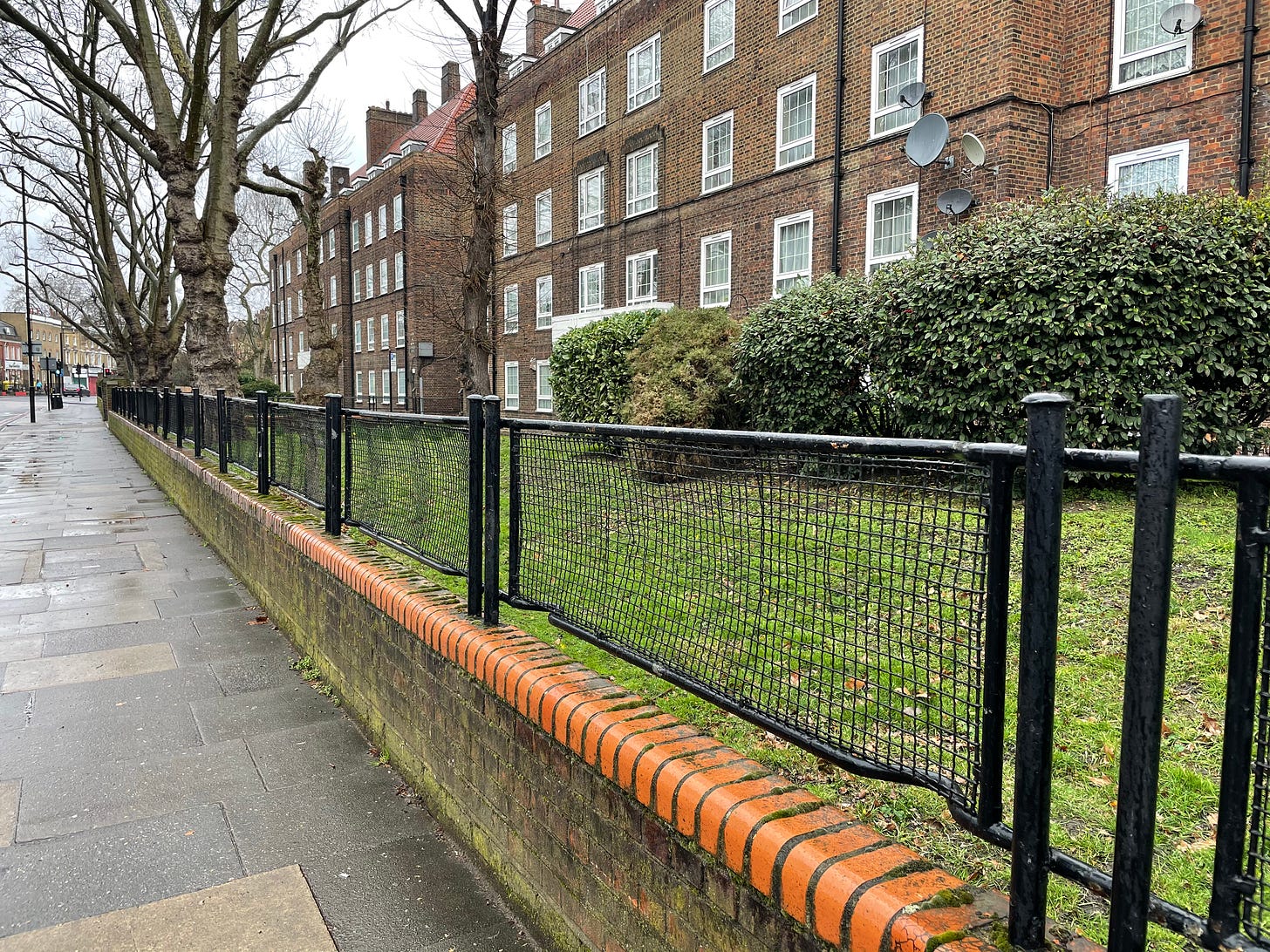Welcome to the 59th edition of Design Lobster! This week we’re getting excited about some mysterious railings and an iconic teapot. Your weekly cuppa design… ☕️
✨Got a design question or object you’d like me to write about? Reply to this email and let me know!
Question: Are there things we shouldn’t recycle?
Around the corner from where I live in South-East London there are some curiously dented railings around certain housing estates. I was surprised to discover recently that these are in fact repurposed WWII stretchers, used to carry those who were injured during the Blitz. If you look closely you can see where the pole is kinked to raise the mesh bed of the stretcher from the ground, making it easier to lift.
Lots of housing estates had lost their railings as part of the munitions effort. After the war, with raw materials still in short supply, the London City Council decided to simply replace these with the half-million or so stretchers that had been produced in the years prior.
Needs must when means are tight, but part of me can’t help but feel a little uncomfortable at the re-use of these stretchers. By virtue of their function, these will have carried people who were in agony or dying – I wonder whether it is respectful to that memory to use them in such an everyday municipal setting. I would be interested in exploring ways their story could be told in-situ – allowing them to function as a memorial too.
Thanks to reader, Will for the heads up on this story.
Design takeaway: Are you re-using materials in an appropriate way?
🏨 I’m pleased to report there is a Stretcher Railing Society and it has a twitter account.
Object: Brown Betty teapot
This glossy chocolate-coloured teapot might be familiar to some of my British readers. Loosely based on a Ming Dynasty pot called the Yixing, this style of teapot was produced by various manufacturers from the 19th century onwards and is associated with the Staffordshire Potteries, a region in the UK Midlands that became a centre for industrial pottery production owing to its favourable clay and mineral deposits .
In the 20th century, the teapot was a favourite of Terence Conran and a best-seller at Habitat in the 70’s. Nowadays they are manufactured only by Cauldon Ceramics.
The key design features are thoroughly utilitarian; the globe-bowl is the best shape for loose-leaf tea to infuse, and the rough-cut spout prevents messy pouring. Even the rich brown Manganese glaze is designed to conceal any drips that do occur. Reportedly the red Staffordshire clay it is made from also retains heat better than any other clay.
It always fascinates me when a strictly rational design choices result in objects that nevertheless have a distinct character like the Brown Betty.
Design takeaway: Could you lean in to rational design choices to make something distinctive?
▶️ The V&A have a mini-documentary about the Brown Betty.
Quote: “It comes down to taste. It comes down to trying to expose yourself to the best things humans have done, and then try to bring those things into what you’re doing.”
– Steve Jobs
In one of the most popular issues of Design Lobster I talked about Ken Kocienda’s approach to design. Ken worked at Apple in the early 2000’s on the software that would power the iPhone’s touch-screen keyboard. This quote from Steve Jobs, who lead Apple in the period that Ken worked there, embodies this approach. By staying curious about the world and trying to digest its lessons, we enrich our own efforts.
Whatever you do, keep discovering.
Ben 🦞
Enjoyed this week’s Design Lobster? Let me know by clicking the heart button.
👇






I also think the re-use of the WW11 railings is a good thing - but that there should be a small plaque or sign that signals how they were used to save lives. I don’t want to live in the past but reminders of past compassion and innovation in our daily lives is a good habit to encourage.
In my humble opinion, reusing WWII stretchers for municipal, domestic purposes is fantastic. As you said, at the time it was needs must which is an ecological take we could really do with now. But more importantly, the sacrifices these people made, the most important of which was given up while laying upon the stretchers, form the building blocks of our society. Their selflessness, bravery and triumph is what allows our society to be alive as it is today. I definitely think there needs to be some sort of a plaque stating what they were though.